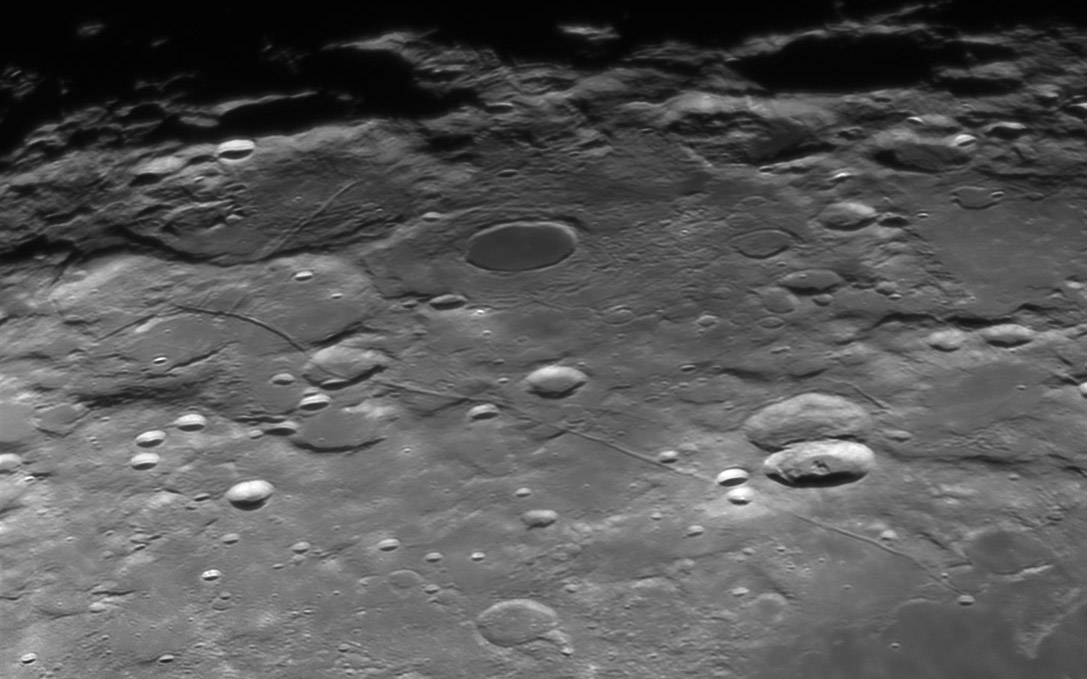September 5, 2009
Riotous Rilles

image by Sean Walker
I don't understand rilles. Well, some I do. Sinuous rilles are lava channels that meander downslope, and arcuate rilles are tension cracks at the edges of subsiding circular maria. Linear rilles - Ariadaeus is perhaps the best seen - sometimes have associated small volcanic vents and are thought to be the surface manifestations of vertical sheets of magma (dikes) that slightly push up the surface causing extension and down-dropping. The Sirsalis Rille, as has been described before, is unusual is being associated with a strong magnetic anomaly and a gravity anomaly. This means, presumably, that its dike has different magnetic and density properties than the lunar megaregolith and Orientale ejecta that it intrudes. I don't know of any other linear rille with such anomalies, but then others don't cut massive piles of basin ejecta. So the straight part of the Sirsalis Rille makes sense, but what about the subtle change in direction near Crüger A, and then the huge curve in the undesignated depression east of Darwin? Bends in dikes are probably caused by changes in the stress fields of the rocks they cut through, but the reasons for such changes here may never be known. The rilles in Darwin are at right angles to the Sirsalis Rille, implying an even more complex stress field. But the difference in direction may represent a difference in time. The rilles in Darwin mostly look older than the Sirsalis slash so they may be responding to an earlier stress regime. Lunar Orbiter shows that the Darwin Rille also makes large curves further west, and the reasons why it should elude me!
Chuck Wood
Yesterday's LPOD: Miyamori Two
Tomorrow's LPOD: Mascons And Masdefs
COMMENTS?
Register, Log in, and join in the comments.



